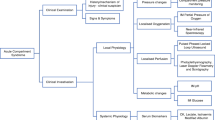Abstract
Background
Compartment syndrome is one of the surgical emergencies in which prompt treatment can save a patient’s life. Many trauma centres currently detect compartment syndrome based on clinical suspicion, whereas experts have advocated for routine monitoring of compartment pressure to reduce the number of unnecessary fasciotomies. Newer electronic devices for measuring compartment pressure are invasive and expensive; their availability factors limit their use. Our research presents a unique non-invasive method for detecting impending compartment syndrome that may be used in any trauma centre or peripheral centre, allowing intervention at an earlier stage.
Materials and Methods
A total of one hundred fifty-three patients with a closed forearm and leg fractures were enrolled in the study. Patients with pre-existing heart illness, peripheral vascular disease, open fractures, and bilateral injuries were excluded. Both Whiteside needle manometry and our novel approach were used to assess the compartment status of the limb by two separate investigators who were double-blinded. Compartment pressure was measured in every compartment in the limb, and the compartment with the highest pressure was taken into consideration. Clinical and manometry values were used to guide fasciotomy.
Results and Discussion
Out of one hundred fifty-three patients, forty-eight (31%) underwent fasciotomy based on clinical and manometry criteria. On analysis of the newer technique with Whiteside manometry, a positive correlation with a Pearson coefficient of + 0.92 and a p-value (< 0.05) was seen. Our proposed technique could not be used in regions other than the forearm and leg and on patients where distal pulse could not be felt. The newly proposed technique provides a simple non-invasive method for classifying and intervening in patients with impending compartment syndrome.



Similar content being viewed by others
References
Elliott KG, Johnstone AJ (2003) Diagnosing acute compartment syndrome. J Bone Joint Surg Br 85(5):625–632
Ulmer T (2002) The clinical diagnosis of compartment syndrome of the lower leg: are clinical findings predictive of the disorder? J Orthop Trauma 16(8):572–577
Walters TJ, Kottke MA, Hargens AR, Ryan KL (2019) Noninvasive diagnostics for extremity compartment syndrome following traumatic injury: a state-of-the-art review. J Trauma Acute Care Surg 87(1S):S59-66
Sheridan GW, Matsen FA 3rd (1976) Fasciotomy in the treatment of the acute compartment syndrome. J Bone Joint Surg Am 58(1):112–115
Whitesides TE, Heckman MM (1996) Acute compartment syndrome: update on diagnosis and treatment. JAAOS-J Am Acad Orthop Surg 4(4):209–218
Mortensen SJ, Vora MM, Mohamadi A, Wright CL, Hanna P, Lechtig A, Egan J, Williamson PM, Wixted JJ, Rutkove SB, Nazarian A (2019) Diagnostic modalities for acute compartment syndrome of the extremities: a systematic review. JAMA Surg 154(7):655–665
Whitesides TE, Haney TC, Morimoto K, Harada H (1975) Tissue pressure measurements as a determinant for the need of fasciotomy. Clin Orthop Relat Res 1(113):43–51
Hammerberg EM, Whitesides TE Jr, Seiler JG III (2012) The reliability of the measurement of tissue pressure in compartment syndrome. J Orthop Trauma 26(1):24–31
Blick SS, Brumback RJ, Poka A, Burgess AR, Ebraheim NA (1986) Compartment syndrome in open tibial fractures. J Bone Joint Surg Am 68(9):1348–1353
McMillan TE, Gardner WT, Schmidt AH, Johnstone AJ (2019) Diagnosing acute compartment syndrome—where have we got to? Int Orthop 43(11):2429–2435
Author information
Authors and Affiliations
Corresponding author
Ethics declarations
Conflict of Interest
The authors declare no competing interests.
Additional information
Publisher's Note
Springer Nature remains neutral with regard to jurisdictional claims in published maps and institutional affiliations.
Rights and permissions
About this article
Cite this article
Ravichandran, A., Arivasan R, Karthikeyan S et al. Palpae Madura — a Novel Non-invasive Method for Detecting Impending Compartment Syndrome in Trauma. Indian J Surg 85, 618–622 (2023). https://doi.org/10.1007/s12262-022-03469-2
Received:
Accepted:
Published:
Issue Date:
DOI: https://doi.org/10.1007/s12262-022-03469-2




